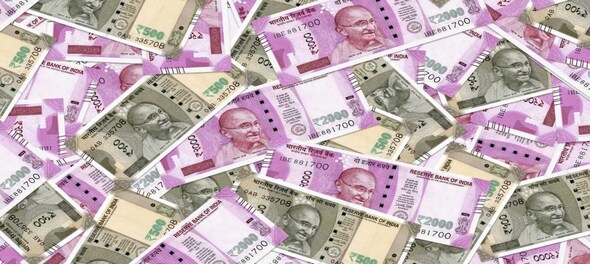
ICRA projects the year-on-year (YoY) expansion in GDP at 9.0 percent each in FY2022 and FY2023, in real terms, with modest downside risk for FY2022 amid the Omicron spread.
In our base-case scenario, we have assumed the impact of the Omicron variant to be limited to Q4FY2022, and no major wave of Covid-19 emerging in FY2023. In terms of tax policy, we do not anticipate any major changes in direct taxes, in pursuit of a stable and predictable tax regime. However, we foresee a continued move to correct inverted duty structures given the Government of India's (GoI’s) recent efforts to support locally manufacturing goods, while at the same time focusing on reducing evasion as well as the compliance burden on businesses and individual taxpayers.
We estimate the GoI’s gross tax revenues in FY2023 at ~Rs 27 trillion, a YoY expansion of 9.3 percent relative to our projected level for FY2022. The estimated growth in gross tax revenues for FY2023 is similar to our real GDP growth forecast of 9.0 percent for that fiscal. The direct tax collections are expected to grow at a healthier 14 percent in FY2023, exceeding our estimate of the nominal GDP growth, with the formal part of the economy expected to continue to thrive even if there is another wave of Covid-19.
Also Read:
However, the continuing impact of the recent excise duty relief is likely to restrict the growth in indirect tax collections under 5 percent in FY2023. We project the GoI’s net tax revenues at Rs 18.3 trillion in our base case for FY2023, a YoY expansion of 6.2 percent. We anticipate the non-tax revenues of the GoI to be pegged at Rs 2.7-3.2 trillion in FY2023, as compared to the level of Rs 2.9 trillion expected for FY2022. Overall, ICRA estimates the GoI’s revenue receipts to grow by ~4-7 percent to Rs 21.0-21.5 trillion in FY2023 from Rs 20.2 trillion in FY2022.
Also Read: Budget FAQs: What is government borrowing?
As far as miscellaneous capital receipts are concerned, there is a reasonable likelihood that the process of the IPO for LIC will get completed in the next fiscal year. Benefitting from this, we expect the GoI to peg the receipts from this head at Rs 1.75 trillion in FY2023 BE, in line with FY2022 BE.
In ICRA’s view, the Union Budget FY2023 should prioritise capital expenditure and infrastructure spending, to help hasten the investment cycle, generate employment opportunities and improve domestic demand.
In terms of revenue expenditure, ICRA expects the outlay for major subsidies (food, fertiliser and fuel) to see a moderation in FY2023, relative to FY2022. We foresee the outlay for food subsidy at Rs 2.5 trillion for FY2023, in our Base scenario, covering the normal requirement under the National Food Security Act (NFSA). This entails a sharp contraction in YoY terms, given the likely high base (~Rs 3.9 trillion) after considering the additional cash outgo of Rs 1.47 trillion for extension of free foodgrains under the PMGKAY (Phase IV-V) for FY2022 over the BE.
For fertilisers, ICRA anticipates a subsidy requirement of Rs 1.3-1.4 trillion for FY2023 (similar to ICRA’s FY2022 est. of Rs 1.41 trillion), driven by elevated international prices, although some moderation from current levels is expected in H2 FY2023.
Moreover, ICRA estimates the requirement for the outlay to be made under MGNREGA at Rs 750 billion for FY2023, in our Base scenario that 60 million of households will be provided employment, in case no severe wave of Covid-19 emerges in the coming fiscal. Timely outflows under this scheme would bolster confidence and consumption demand in the rural areas.
Therefore, our base scenario builds in a mild 2 percent rise in the aggregate revenue expenditure to Rs 32.2 trillion for FY2023, relative to the expected level for FY2022. With an 8 percent growth in gross capex, the GoI’s total expenditure is projected at Rs 38.2 trillion in FY2023 (3 percent higher than our FY2022 est. of Rs 37.2 trillion).
Based on our assumptions for revenues and expenditure, in case no severe wave emerges, the revenue deficit is expected to ease somewhat to Rs. 11.0 trillion (4.2 percent of our estimate of GDP) for FY2023, from the Rs 11.5 trillion (5.0 percent of GDP) being forecast for FY2022. Accordingly, the fiscal deficit in FY2023 could be budgeted at Rs 15.2 trillion (5.8 percent of GDP), similar to the Rs 15.1 trillion in the FY2022 BE.
In the adverse case, ICRA projects the fiscal deficit at a higher Rs 17.9 trillion (or 6.9 percent of GDP), driven by the two major outlays intended to bolster confidence amongst households, namely free foodgrains under the PMGKAY scheme and an enhanced outgo for MGNREGA, amidst lower indirect taxes and compressed disinvestment flows.
—Aditi Nayar is Chief Economist, ICRA. The views expressed are personal
(Edited by : Ajay Vaishnav)
First Published: Jan 24, 2022 4:09 PM IST
Check out our in-depth Market Coverage, Business News & get real-time Stock Market Updates on CNBC-TV18. Also, Watch our channels CNBC-TV18, CNBC Awaaz and CNBC Bajar Live on-the-go!


Just 8% women candidates contested first two phases of Lok Sabha polls
Apr 29, 2024 12:00 PM
The sexual assault case against Prajwal Revanna — here's what we know so far
Apr 29, 2024 11:36 AM
Repolling underway at one polling booth in Chamarajanagar LS segment in Karnataka
Apr 29, 2024 10:32 AM

